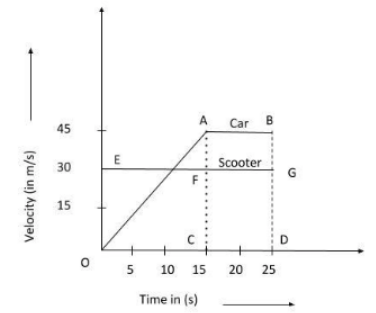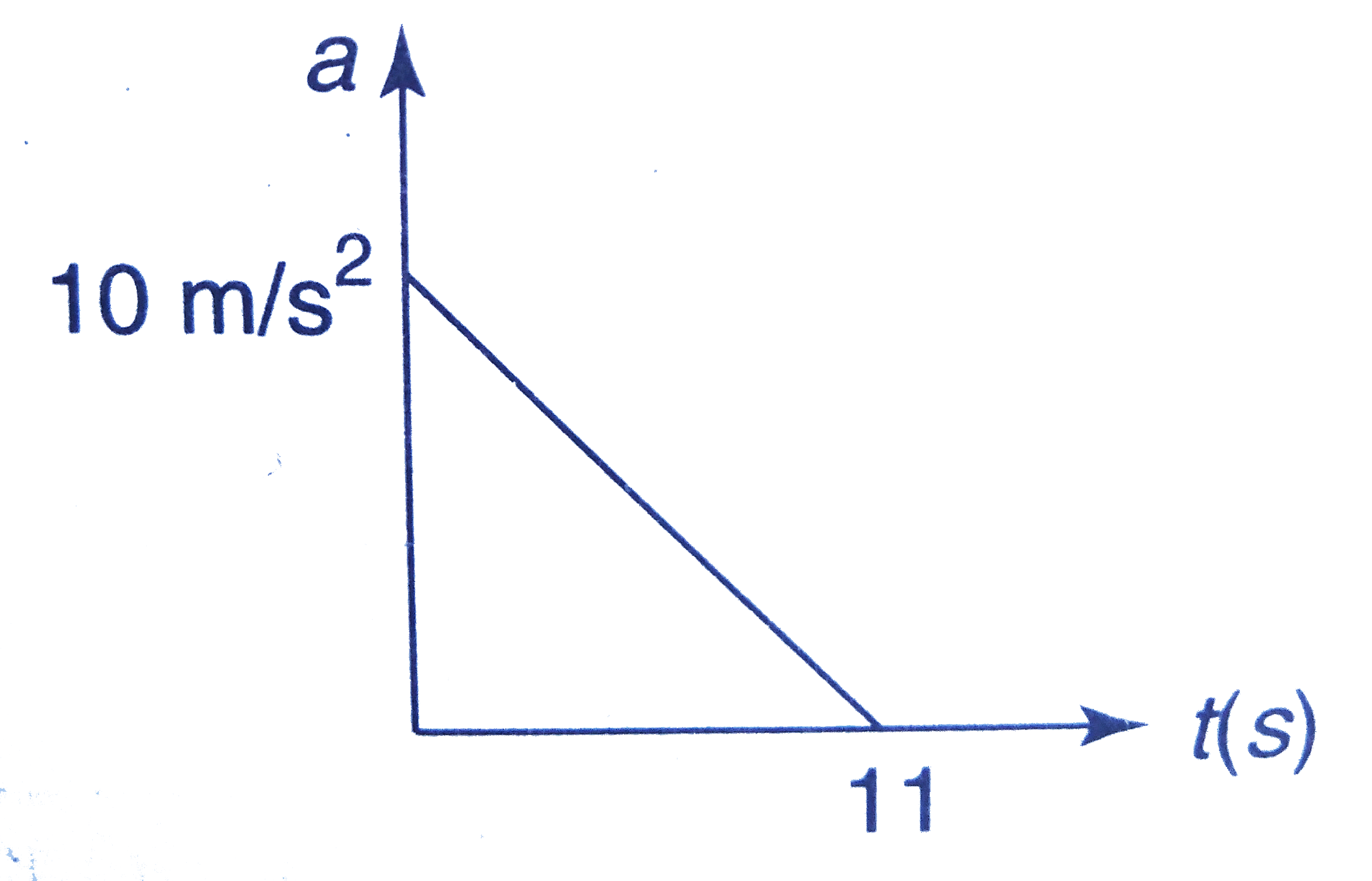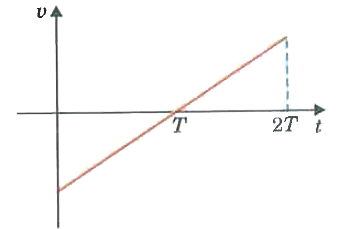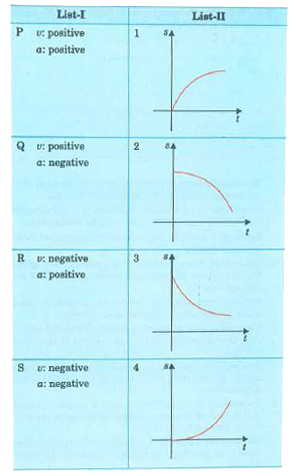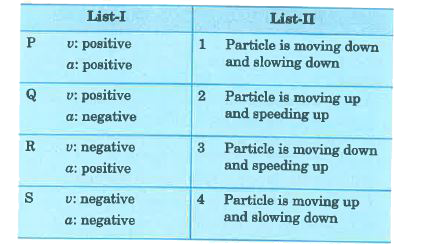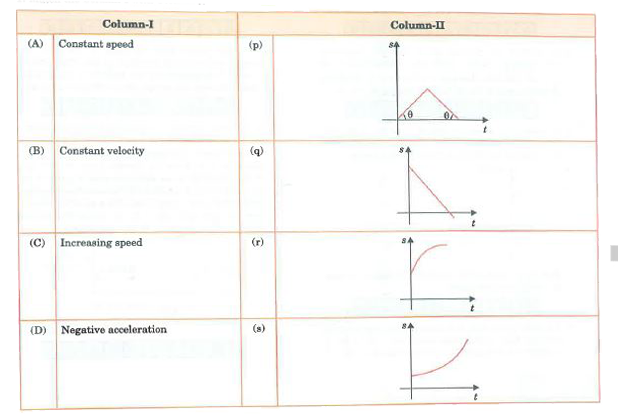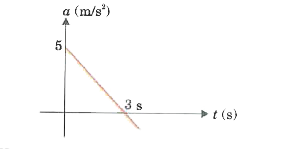COMPETITION FILE (ASSERTION REASON) from MODERN PUBLISHERS PHYSICS (HINGLISH) MOTION IN A STRAIGHT LINE for Class 11
| Class 11 | PHYSICS |
| Chapter | MOTION IN A STRAIGHT LINE |
| MODERN PUBLISHERS PHYSICS (HINGLISH) | COMPETITION FILE (ASSERTION REASON) |
| Medium | English |
| Academic Year | 2023-2024 |
Question 18
A particle is dropped from rest from the top of a building of height 100m. At the same instant another particle is projected upward from the bottom of the building What should be the speed of projection of the particle projected from the bottom of building so that the particle cross each other after 1s? Acceleration due to gravity is 10 m/s2.View SolutionQuestion 70
Preeti reached the metro station and found that the escalator was not working. She walked up the stationary escalator in time t1. On other days, if the remains stationary on the moving escalator, then the escalator takes her up in time t2. The time taken by her to walk up on the moving escalator will be :View SolutionQuestion 84
Two stones are through up simultaneously from the edge of a cliff 240 m high with initial speed of 10 m/s and 40 m/s respectively. Which of the following graphs best represents the time variation of relative position of the second stone with respect to the first? Assume stones do not rebound after hitting the ground and neglect air resistance, take . g=10m/s2 (The figures are schematic and not drawn to scale)View SolutionQuestion 93
A tennis ball dropped on a barizoontal smooth surface , it because back to its original postion after hiting the surface the force on the bell during the collision is propertional to the length of compression of the bell . Which one of the following skethes desches discribe the variation of its kinetic energy K with time 1 mass apporiandly ? The figure as only illistrative and not to the scale . View SolutionQuestion 94
Consider an expanding sphere of instantaneous radius ? whose total mass remains constant. The expansion is such that the instantaneous density ρ remains uniform throughout the volume. The rate of fractional change in density (dpρdt) is constant. The velocity v of any point on the surface of the expanding sphere is proportional to View SolutionQuestion 111
There is a tower of height 20m and a particle is projected up from top of the tower with an initial speed 20m//s. Top of the tower is marked as point A, from where particle is projected. Point of maximum height a denoted as B. When particle reaches the point A during downward journey then we call the same point as C. Point at the bottom of tower is marked as D where particle finally strikes. Acceleration due to gravity g=10m/s2
How much time the particle takes to cross the point C after being projected from point A. View SolutionQuestion 112
There is a tower of height 20m and a particle is projected up from top of the tower with an initial speed 20m//s. Top of the tower is marked as point A, from where particle is projected. Point of maximum height a denoted as B. When particle reaches the point A during downward journey then we call the same point as C. Point at the bottom of tower is marked as Dwhere particle finally strikes. Acceleration due to gravity g=10m/s2
Maximum height above the ground attained by particle is View SolutionQuestion 113
There is a tower of height 20m and a particle is projected up from top of the tower with an initial speed 20m//s. Top of the tower is marked as point A, from where particle is projected. Point of maximum height a denoted as B. When particle reaches the point A during downward journey then we call the same point as C. Point at the bottom of tower is marked as D where particle finally strikes. Acceleration due to gravity g=10m/s2
Time taken by the particle to reach the ground is View SolutionQuestion 125
STATEMENT -1 : For an observer looking out through the window of a fast moving train , the nearby objects appear to move in the opposite direction to the train , while the distant objects appear to be stationary .
STATEMENT - 2 : If the observer and the object are moving at velocities →v1 and →v2 respecttively with refrence to a laboratory frame , the velocity of the object with respect to a laboratory frame , the velocity of the object with respect to the observer is →v2−→v(1) .
(a) Statement -1 is True, statement -2 is true , statement -2 is a correct explanation for statement -1
(b) Statement 1 is True , Statement -2 is True , statement -2 is NOT a correct explanation for statement -1
(c) Statement - 1 is True , Statement -2 is False
(d) Statement -1 is False, Statement -2 is True View SolutionQuestion 130
A particle is projected vertically upwards from an elevated point. Magnitude of the velocity at height h above the starting point is found to be half of the magnitude of velocity at h height below the starting point. If maximum height reached by the particle above its initial point is mh/n then find (m-n). View SolutionQuestion 137
A rocket is moving in a gravity free space with a constnat acceleration of 2ms−1 along +x direction (see Fig.5.126). The length of a chamber inside the rocket is 4m. A ball is thrown from th left end of the chamber in +x direction with a speed of 0.3 ms−1 relaitve to the rocket. At the same time , another ball is thrown in -x direction with a speed of 0.2ms^(-1) from its right and relative to the rocket. the time in seconds when the two balls hit each other is:
 View Solution
View Solution
All Exercises from MODERN PUBLISHERS PHYSICS (HINGLISH) Class 11 PHYSICS MOTION IN A STRAIGHT LINE
- PRACTICE PROBLEMS
- CONCEPTUAL QUESTIONS
- TOUGH & TRICKY ( PROBLEMS)
- NCERT (ADDITIONAL EXERCISE)
- NCERT (MULTIPLE CHOICE QUESTION (TYPE-I))
- NCERT (MULTIPLE CHOICE QUESTION (TYPE-II))
- NCERT (SHORT ANSWER TYPE QUESTION)
- NCERT (TEXTBOOK EXERCISES )
- NCERT (VERY SHORT ANSWER TYPE QUESTION)
- HIGHER ORDER THINKING SKILL AND ADVANCED LEVEL QUESTION WITH ANSWER
- REVISION EXERCISE (FILL IN THE BLANKS)
- REVISION EXERCISE (LONG ANSWER QUESTIONS)
- REVISION EXERCISE (NUMERICAL PROBLEMS )
- REVISION EXERCISE (SHORT ANSWER QUESTIONS)
- REVISION EXERCISE (VERY SHORT ANSWER QUESTION)
- COMPETITION FILE ( A.(MULTIPLE CHOICE QUESTIONS))
- COMPETITION FILE ( B.(MULTIPLE CHOICE QUESTIONS))
- COMPETITION FILE ( C.(MULTIPLE CHOICE QUESTIONS))
- COMPETITION FILE ( D.(MULTIPLE CHOICE QUESTIONS))
- COMPETITION FILE (ASSERTION REASON)
- COMPETITION FILE (INTEGER TYPE QUESTIONS )
- COMPETITION FILE (MATCHING TYPE QUESTIONS)
- COMPETITION FILE (MATRIX MATCH TYPE QUESTIONS )
- CHAPTER PRACTICE TEST
- SOLVED EXAMPLE

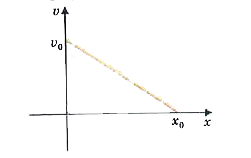
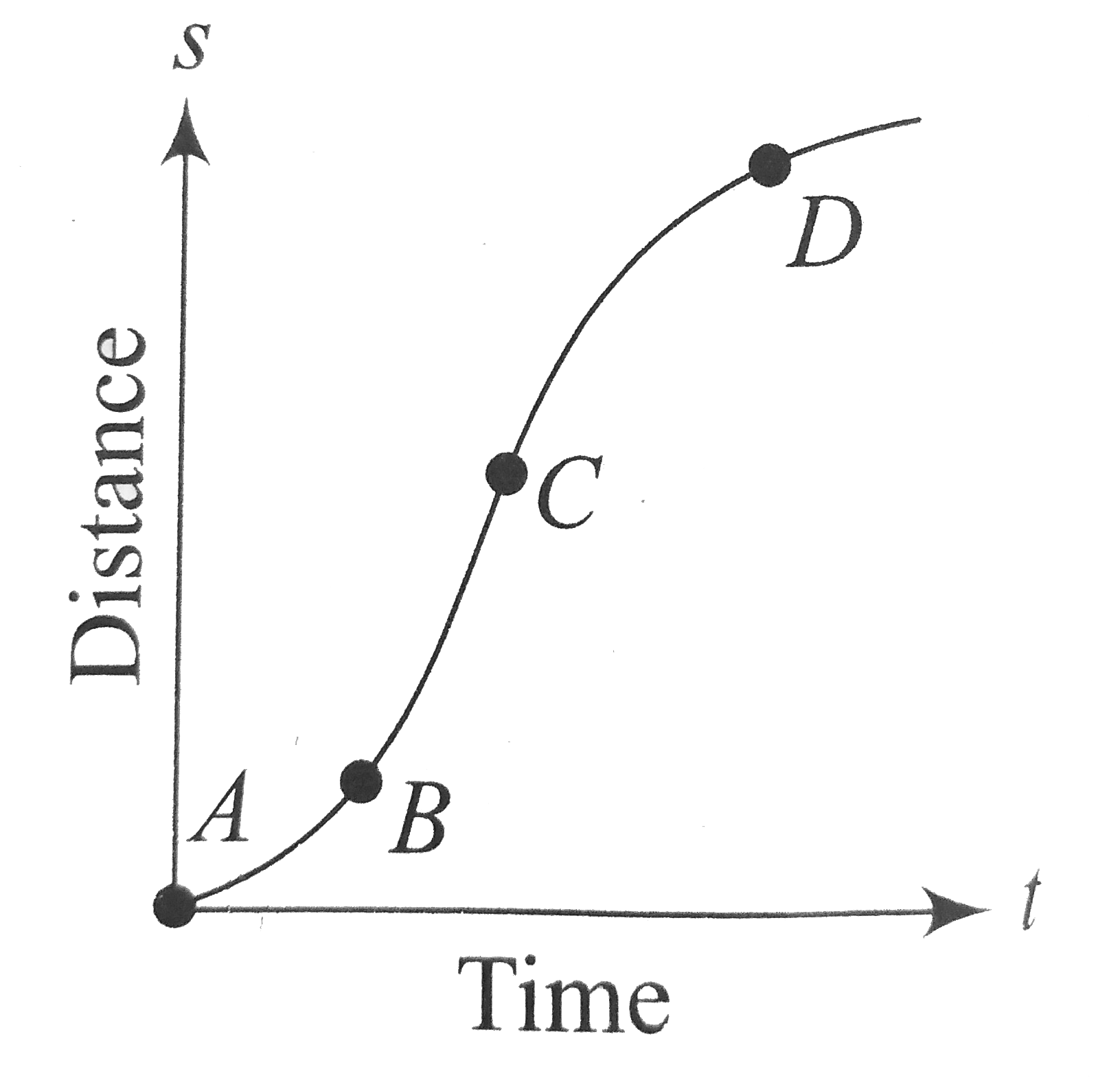 .
.